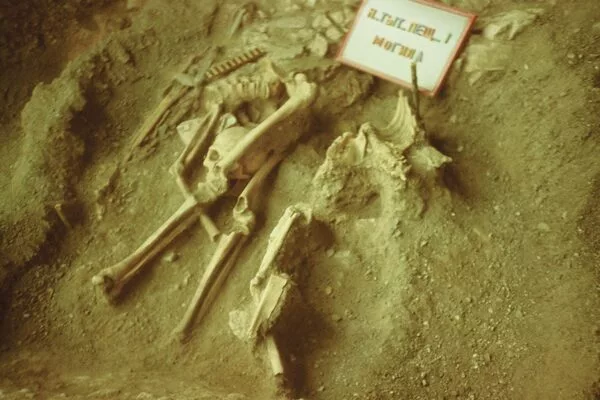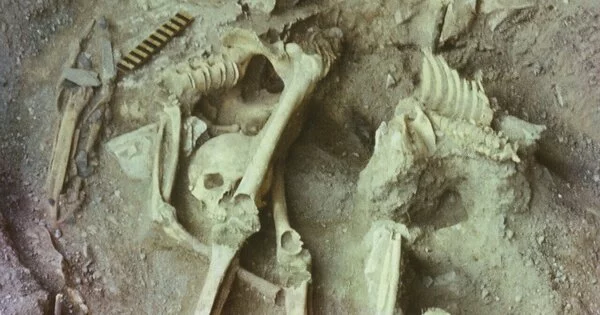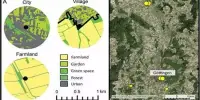This statement suggests that research on ancient genomes from Siberia has revealed evidence of gene flow from North America to Siberia across the Bering Sea. This could have occurred during prehistoric times when there were land bridges between the two continents, allowing humans and animals to migrate between them. This type of genetic research can provide insight into the migration patterns and history of human populations.
The movement of people from North Asia to North America across the Bering Sea is a well-known phenomenon in early human history. Despite this, the genetic makeup of the people who lived in North Asia at the time has remained a mystery due to a scarcity of ancient genomes from this region. Now, researchers reporting in Current Biology on January 12 describe genomes from ten individuals ranging in age from 7,500 years to 7,500 years old, which help to fill the gap and demonstrate geneflow from people moving in the opposite direction from North America to North Asia.
Their research uncovered a previously unknown group of early Holocene Siberian people who lived in the Neolithic Altai-Sayan region, near the borders of Russia, China, Mongolia, and Kazakhstan. The genetic data show they were descendants of both paleo-Siberian and Ancient North Eurasian (ANE) people.
“We describe a previously unknown hunter-gatherer population in the Altai as early as 7,500 years old, which is a mixture between two distinct groups that lived in Siberia during the last Ice Age,” says Cosimo Posth at the University of Tübingen, Germany, and senior author of the study. “The Altai hunter-gatherer group contributed to many contemporaneous and subsequent populations across North Asia, showing how great the mobility of those foraging communities was.”
We describe a previously unknown hunter-gatherer population in the Altai as early as 7,500 years old, which is a mixture between two distinct groups that lived in Siberia during the last Ice Age.
Cosimo Posth
Posth observes that the Altai region is well-known in the media as the site of the discovery of a new archaic hominin group, the Denisovans. However, the region has historical significance as a crossroads for population movements between northern Siberia, Central Asia, and East Asia over millennia.
According to Posth and colleagues, the unique gene pool they discovered may be an optimal source for the inferred ANE-related population that contributed to Bronze Age groups from North and Inner Asia, such as Lake Baikal hunter-gatherers, Okunevo-associated pastoralists, and Tarim Basin mummies. They also discovered Ancient Northeast Asian (ANA) ancestry in another Neolithic Altai-Sayan individual with distinct cultural features, which had previously been described in Neolithic hunter-gatherers from the Russian Far East.
The findings reveal the spread of ANA ancestry about 1,500 kilometers farther to the west than previously observed. In the Russian Far East, they also identified 7,000-year-old individuals with Jomon-associated ancestry, indicating links with hunter-gatherer groups from the Japanese Archipelago.

The findings also support multiple phases of gene flow from North America to northeastern Asia over the last 5,000 years, reaching the Kamchatka Peninsula and central Siberia. The findings highlight a largely interconnected population throughout North Asia from the early Holocene onwards, according to the researchers.
“The finding that most surprised me is from an individual dated to a similar period as the other Altai hunter-gatherers but with a completely different genetic profile, showing genetic affinities to populations located in the Russian Far East,” says Ke Wang, lead author of the study and professor at Fudan University in China. “Intriguingly, the Nizhnetytkesken individual was discovered in a cave containing rich burial goods, a religious costume, and objects interpreted as possible shamanic representations.”
According to Wang, the discovery implies that people with very different profiles and backgrounds were living in the same area at the same time.
“It’s unclear whether the Nizhnetytkesken individual came from afar or if the population from which he derived was nearby,” she says. “However, his grave goods appear to be different from other local archeological contexts, implying mobility of both culturally and genetically diverse individuals into the Altai region.”
The Altai genetic data show that North Asia had highly connected groups as early as 10,000 years ago, spanning vast geographic distances. “This suggests that human migrations and admixtures were the norm rather than the exception for ancient hunter-gatherer societies,” Posth says.














